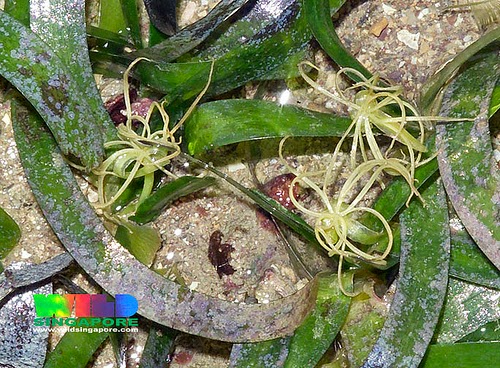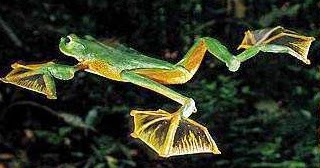Flowering plants (angiosperms) began to dominate the Earth’s
vegetation about 100 million years ago and, while other, more primitive, plants
continue to be abundant, the present diversity of angiosperms is remarkable. When
thinking of flowering plants, our minds may turn to beautiful garden borders,
meadows and occasional clumps of flowers in woods and verges. Yet angiosperms have also invaded water bodies; although this is really a re-invasion, as
land plant evolved from distant aquatic ancestors.
Anyone visiting a stream draining from chalk strata is
impressed by the amount of vegetation growing over its bed and invading from
the margins. There are many microscopic algae that are only visible under a
microscope, but two common flowering plants often dominate: water cress and
water crowfoot. Of the two, water cress grows into the stream from the banks
and can extend right across narrow channels, a habit that has been exploited in
the development of commercial cress beds fed by water from chalk streams. The bulk
of the plant remains above the water surface and this contrasts with water
crowfoot, where plants grow in dense stands, rooted into the bed of the stream
and affecting its flow pattern. Water crowfoot is a relative of the buttercup
and its flowers are very similar in structure, although they are white, rather
than yellow, in colour (see below). It is only during flowering that we see water crowfoot
above the water surface, although stands can become so dense that, at times of
low flow in summer, they may be exposed to the air. They are well adapted to
life in flowing water. The drag on the mass of leaves is counteracted by an
effective rhizome and root system that ensures anchorage on the stream bed and
the plants engineer the stream around them. Stands provide an obstruction to
flow that creates channels of faster-moving water between plants and this serves
not only to keep the substratum clear of sediment, but the growing leaves are
also unaffected by deposition and can thus photosynthesise efficiently. In
contrast, the base of the plant is an area of sediment build-up and this
includes much organic matter [1] that serves as a source of nutrients - another
way in which the plants engineer their habitat to their advantage.
Although water cress and water crowfoot are both aquatic
plants, with the former fitting the definition less easily than the latter, seagrasses
are truly aquatic. As their name suggests, these plants are marine, spending
the whole of their life cycle under water. Seagrasses have a world-wide
distribution and are perhaps most commonly associated with tropical seas and,
especially, reefs, where the water is clear and there is good light penetration
to the substratum, allowing efficient photosynthesis. Nutrients needed for
growth are taken up by roots and stored in rhizomes that also serve to stabilise
soft sediments. Interestingly, seagrasses are more closely related to lilies
and ginger than to grasses [2] and their colonisation of soft sediments results
in large "grassy" meadows when conditions for their growth are favourable. These are
then grazed upon by many animals and they also form shelter for many other organisms and a substratum for yet more.
Seagrasses are also found commonly in shallow temperate seas
that have sufficient transparency to allow the plants to grow. As I grew up by
the sea in Torbay, and had a love of Natural History, I knew about seagrasses,
but had no idea that there were meadows of the plants so close to some of my
collecting spots. Nor did I know that seagrasses were flowering plants. Like
many, I thought that seaweeds alone were the dominant large marine plants around
coasts.
Two of my favourite places to visit in Torbay were Elbury
[Elberry] Cove and the rocks below Corbyn’s Head, where I spent time collecting
marine creatures to keep in aquarium tanks. [3] Both locations now have interesting and
informative signs (see below) describing the importance and susceptibility to
damage by boats etc. of the seagrass meadows just offshore.
It is likely that Zostera is one of the seagrasses and Henry Gosse mentions this plant when describing the results of dredging a little further up the coast:
Now we have made our offing, and
can look well into Teignmouth Harbour, the bluff point of the Ness some four
miles distant, scarcely definable now against the land. We pull down sails, set
her head for the Orestone Rock [just off Torbay], and drift with the tide. The
dredge is hove overboard, paying out some forty fathoms of line, for we have
about twelve or fourteen fathoms’ water here, with a nice rough, rubbly bottom,
over which, as we hold the line in hand, we feel the iron lip of the dredge
grate and rumble, without catches or jumps. Now and then, for a brief space, it
goes smoothly, and the hand feels nothing; that is when a patch of sand is
crossed, or a bed of zostera, or close-growing sea-weeds, each a good variation
for yielding. [4]
As Gosse was a devout
Creationist, the presence of flowering plants in soft sediments around marine
coasts would be another example of the extraordinary events of the six days in
which all living things - and all fossil ones - came into existence. [5] To
those of us who cannot share such a view, the presence of flowering seagrasses
under water is another example of the extraordinary powers of evolution.
In terrestrial habitats, the fertilisation of ova by pollen
is aided by insects, wind or other agents and there are a diverse range of
adaptations to ensure that fertilisation is achieved - by evolving nectar
and/or scent to attract insects, by evolving elaborate colour patterns that are
attractive, by producing pollen in enormous quantities, etc. - yet flowers are
retained by seagrasses where neither insects or wind can be involved in
pollination. Seagrass plants bear both male and female flowers and the pollen from
male flowers is released into the water and thus wafts around the plants. The
use of water for fertilisation is, of course, extremely common in many marine organisms,
including seaweeds and many animals, and that makes underwater flowers seem
less unlikely than on first consideration. Natural History is full of such
discoveries and one is always learning something new. That’s the satisfaction
of it - that, and the sense of wonder at just what can evolve over millions of
years and millions of generations.
[1] Cotton, J.A., Wharton, G., Bass, J.A.B., Heppell, C.M.
and Wotton, R.S. (2006) Plant-water-sediment interactions in lowland permeable
streams: investigating the effect of seasonal changes in vegetation cover on
flow patterns and sediment accumulation. Geomorphology
77: 320-324.
[3] Roger S Wotton (2012) Walking With Gosse: Natural History, Creation and Religious Conflicts. e-book.
[4] Philip Henry Gosse (1865) A Year at the Shore. London, Alexander Strahan.
[5] Philip Henry Gosse (1857) Omphalos: an attempt to untie the geological knot. London, John Van
Voorst.
.jpg)
















